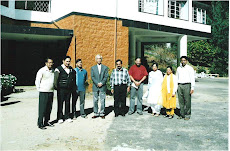If learning from failure is key to success, Robert Sobel’s classic When Giants Stumble is essential reading.
It’s pretty easy to pick a few successful companies or people and pick out a few reasons why the boys (or boy) done good. Slap the words down, knock the pages between covers, point out a salutary lesson for business school speed-readers and, with a modicum of luck, you’ll be a guru on a neverending lecture tour.
Robert Sobel had a 30-year career as humongously prolific author and university business historian when he wrote this book, published in the year of his death, 1999. Here, he takes a solid, no-frills approach to his theme and there’s a certain schadenfreude in this examination of contenders who ultimately failed to maintain their rise to stardom.
Not all the 15 subjects are well known these days, but you might remember Schlitz beer, stricken airline Pan-Am or personal computer pioneer Osborne. It doesn’t matter too much if you don’t know them as Sobel does a brilliant job in describing and inspecting the causes of their implosions.
It’s also a rattling good narrative as it follows the classic riches-to-rags reversed arc. As Sobel writes, “If there is any single moral to the tales it is that for all but one of these entities, failure was preceded by great success.”
So why do good companies go bad? Common threads include hiring, underfunding, overexpansion, service, market change, rules and regulations and, of course, bone-headed leadership. The last provides some painful examples with human fallibility and hubris never far from the boardroom.
Some critics argue that Sobel never really knocks off the “how to avoid them” part of his title but that criticism seems shrill. The reasons these companies failed are carefully set out; you avoid their fates by not doing the same things.
One of the attractions of this book is that Sobel is not blowing his own trumpet and coming up with some media-friendly formula of homilies or capsule pieces of advice. A bit like unhappy families in Anna Karenina, you could say that companies that fail tend to do so in their own several ways.
Sobel’s characteristic style, taking a meditative look back on the evidence in retrospect might have had something to do with his skills as a chess player; as a boy he was good enough to beat future world champion Bobby Fischer. But he was also one of the great popularisers and his books were aimed at a general audience keen to understand complex phenomena such as stock markets and the rise of computer companies, marketing and media tycoons.
As ever with bestselling writers, some have been keen to dismiss him as just another formulaic hit machine but Sobel had already mocked the academic community in For Want Of A Nail, his brilliant imagining of an alternative US history. His books might have been popular but they took the common reader deep into understanding the modern industrial age. All of his books are worth exploring, but When Giants Stumble is a fine read for those of you who have scaled Everest – and a reminder that it’s all downhill from there.
To buy online: When Giants Stumble: Classic Business Blunders and How to Avoid Them





